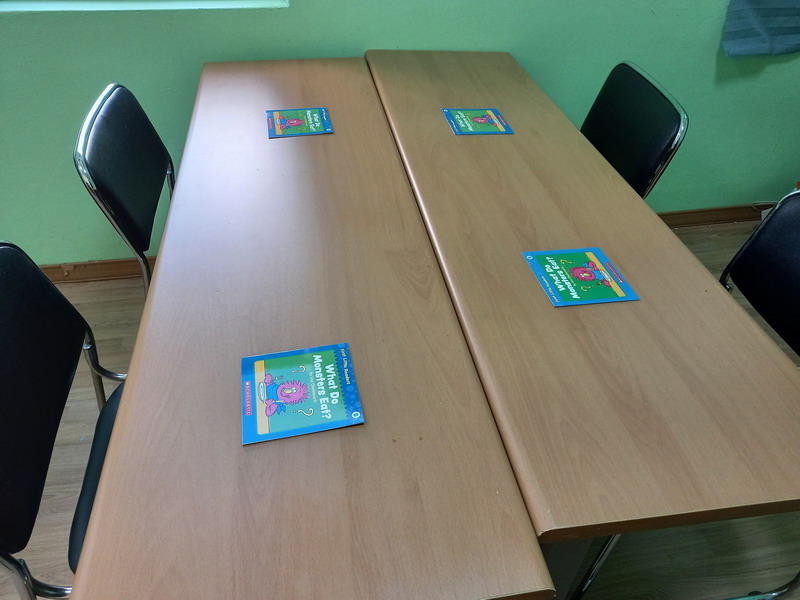The Story on Using Stories for Language Learning
An Interview with Jessica Magnusson: Storyteller, Language Teacher, University Professor
Everyone likes stories! We listened to stories from our mother as soon as we were old enough to hear. We followed attentively as we were read storybook stories (over and over) at bedtime. The main form of teaching for millennia has been via stories told by village elders to the children. If people like stories so much and if learning, including first-language learning, takes place through stories, how effective would they be in teaching a second language such as English? To answer this question, we look to Jessica Magnusson.
Jessica has been teaching Freshman English and teaching methodology courses, as well as special programs at Gwangju National University of Education since 2011. In addition, she has been teaching kindergarten, elementary school, middle school, and high school students over the years. She earned a master’s degree in TESOL from the well-known School for International Training (SIT) in Brattleboro, Vermont. Our interview with Jessica on the use of stories in teaching English follows.
Interviewer: First of all, thank you, Jessica, for making the time for this interview. Before getting into how you use stories in your EFL classes, could you clarify the differences between “storytelling,” “storybook reading,” and using stories in general in teaching EFL?

Jessica: I am happy to have the opportunity to speak with you today. Thank you for this question.
Storytelling is the active process of telling a story. This brings to mind great storytellers standing or sitting in front of classes of students, changing their voices to reflect emotion, characters, and events in the story. Storytellers also sometimes bring props or show images to students.
But storytelling is also what the average person does every day. We tell stories to other people about what happened to us during the day, about our remembered experiences, and even our plans for the future. We also relay the plots of interesting books we have read, or movies and TV shows that we have seen. We share stories that combine reality with the imagination. People often tend to talk to each other in story form.
Storybook reading is being on the receiving end of a story that is in written form. It is often used as a way to help EFL students increase their language proficiency. Storybook reading is intended to engage students in a story (and therefore in the learning process). Storybook reading can be thought of as a teacher reading a storybook aloud to students. It can also be students reading storybooks themselves. As a teacher, I like to have elementary school students each have their own “book” so that we can read one story together. These are usually printed mini-books from a website.
“Using stories in general” is how I have conducted most of my classes for both K–12 students and university students for the past five years or so. I have enjoyed showing animated stories to my students from internet sources such as YouTube, Little Fox, and Epic. We have discussions or do activities related to the stories.
Interviewer: Could storybook reading be considering a form of extensive reading?
Jessica: Yes, it could be considered a form of extensive reading. When I first heard about extensive reading, it sounded like the best thing for language learning. I also wanted to do extensive reading myself to improve my Korean language skills. However, even though it sounds great in theory, I found it to be much more difficult to implement in practice in a classroom.
Interviewer: Why do you think extensive reading is difficult to implement?
Jessica: Well, many people do not enjoy reading in a foreign language. I also found that I do not really enjoy reading books in Korean. I have since settled on the strategy of using extensive listening plus extensive reading. I watch Korean Netflix movies and shows while also reading the Korean subtitles. I also have an app on my phone that I use to listen to books in Korean while also reading the text.
I also found it difficult to do extensive reading with K-12 students. By this, I mean I found it difficult to implement as a lone teacher. For many students, there needs to be a system that supports extensive reading. I have realized that extensive reading can be much more complicated than just having students choose books and read them. A few years ago, I wanted to try extensive reading with a class of six students (third and fourth grade, elementary school). I was so excited about it. I had acquired or purchased many storybooks during the year that I worked for Oxford University Press Korea (2010) and at a part-time job where I taught one story per week to students at a bookstore every Saturday for four years. So, I had lots and lots of books! I brought in a bunch of books that I believed would be at an appropriate level for the students. The students were excited by the books but made no attempt to read the words, even though I was sure that they knew some of them. They enjoyed looking at the pictures in the books.
I believe that extensive reading can be encouraged in an environment that has easy access to English books and positive reinforcement from adults (parents, teachers, and caretakers). It also helps if the students have a sufficient understanding of the spoken language. I have seen some English academies carry out effective extensive reading programs.
I encourage my university students to do extensive reading and make this an option for their weekly homework. Another option includes watching TV shows or movies while also reading the subtitles in English.

Interviewer: You mentioned “extensive listening” and “extensive reading” being used together. What is your experience with this?
Jessica: Yes, I have found that it lessens the burden on students if they listen while also reading. It is great for reluctant readers. As a language learner myself, I prefer combining listening and reading.
Interviewer: We often think of using stories for teaching as “kids’ stuff.” Does using stories as teaching material work best with young learners or can they also be used with older learners?
Jessica: Stories work great for all ages! I use one story per class with university students. Before introducing stories in my university classes in 2016, I was nervous that students would not respond well or would consider stories too childish. So far, students have responded well to the stories, and I am so happy that I have incorporated them into my teaching. I believe that this makes the classes more interesting for the students and also for myself as a teacher. When there is a story, students often become curious about what is going to happen and therefore are more engaged in the class. It also gives students something to talk about. Sometimes students are hesitant or do not want to talk about themselves, but they are comfortable talking about the events and the characters in a story. I had become burnt out on purely “conversational English.”
Interviewer: Could you describe the different ways that you have used stories effectively in EFL teaching?
Jessica: This is a matter of selecting a story that works well for a certain age or proficiency group. It is not an easy task. Stories need to be selected carefully so that they suit the interests and proficiency level of the students. When I first started selecting stories, I was not very good at it. Now, I have a list of stories that have continued to work well with students, so I tend to use them year after year. And I am always looking for new stories. Also, if a story really does not seem to be working with a particular group, it is okay to just back out of the story.
Interviewer: One of the biggest drawbacks to setting up an extensive reading program is getting the school to allocate sufficient funds to purchase an adequate number of storybooks. How do you obtain materials for your story-related activities?
Jessica: I use the Little Fox website to show animated stories to my students, so I pay an annual fee. The site allows you to print out the stories, and it is easy to create one mini-book for each student. These have been great for my elementary school students because we study one story per class. I then encourage the students to take the books home to read to a family member. I also use mini-books from Scholastic such as the First Little Readers series. I love using the mini-books because they are not overwhelming for beginning readers. Also, students, hopefully, can feel a sense of pride in the mini-books that they have collected and are able to read and understand.
This would not count as an extensive reading program because I am choosing the reading materials for my students. Originally, I wanted to set up an extensive reading program at my small school, but I decided against it because the students I teach are generally low level and need to build up their basic reading skills.
For someone who wants to set up an extensive reading program on a budget, there are sites where mini-books can be downloaded and printed for an annual fee. “Little Fox” and “Scholastic” are two of these kinds of sites. Also, second-hand bookstores might be a good place to look. In addition, some people are willing to donate books that they are no longer using.
Interviewer: Have you done any classroom research concerning the efficacy of using stories as opposed to teaching without the stories?
Jessica: I have not done any research yet. I only have anecdotal evidence, but it indicates that stories can be a very good teaching tool.
Interviewer: Speaking of anecdotes, do you have any interesting anecdotes regarding students and their experiences with stories that you would like to relate?
Jessica: I think it is really interesting when students respond strongly to the events in a story. They sometimes get angry at characters who behave badly or rudely. Or they find certain stories heartwarming. Stories on the Little Fox website are often broken up into episodes, and students sometimes beg me to show them the next part of the story, even though I had planned it for their next class.
Interviewer: What about future plans – is there any use of stories that you would like to try out with your students but have not had the opportunity to do yet?
Jessica: I am interested in doing more hands-on activities with younger students related to the stories. So, I am always looking for new ideas. And I am also always looking for new stories to teach.
Interviewer: Well, it sounds like there is another interview in our future when those new stories and new ideas are ready to be revealed! Thank you, Jessica, for sharing with us your experiences of using stories in the EFL classroom.
Interviewed by David Shaffer, vice-president of Gwangju-Jeonnam KOTESOL and editor-in-chief of the Gwangju News.
Photographs courtesy of Jessica Magnusson.







